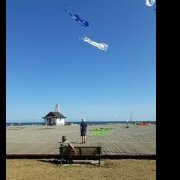P.V. Solar Hot Water System. D.I.Y.
-
Recently Browsing 0 members
- No registered users viewing this page.
-
Topics
-
-
Popular Contributors
-
-
Latest posts...
-
100
Report Wall Street to Sukhumvit: Expat’s Brutal Wake-Up Call for Dreamers in Thailand
This article looks like an advert for his book to me. How many books are there about the pitfalls of moving to Thailand? I have no intentions of buying his book. I have lived in Thailand and worked here on and off since 1991 and had been on holiday many times before. When did he move, before or shortly after 2007-8 ? -
7
The Great Trump Tomato Crisis
Trump wants American farmers to be able to Ketchup. -
-
45
Tourism Indian Tourists Defy Trends, Boost Thai Arrivals Amid Airline Woes
Any bargirl will speek Indian people stinks. -
4
Handle Shaking of Aerox 155
Depending how big it is, and where it is placed. Seen some few 50L boxes places to far back which to catch air at 50km+ OP when do the shaking start at what speed? -
4
Handle Shaking of Aerox 155
How old is the bike and total km? How big is the box behind? Picture?
-
-
Popular in The Pub






.thumb.jpeg.d2d19a66404642fd9ff62d6262fd153e.jpeg)







Recommended Posts
Create an account or sign in to comment
You need to be a member in order to leave a comment
Create an account
Sign up for a new account in our community. It's easy!
Register a new accountSign in
Already have an account? Sign in here.
Sign In Now